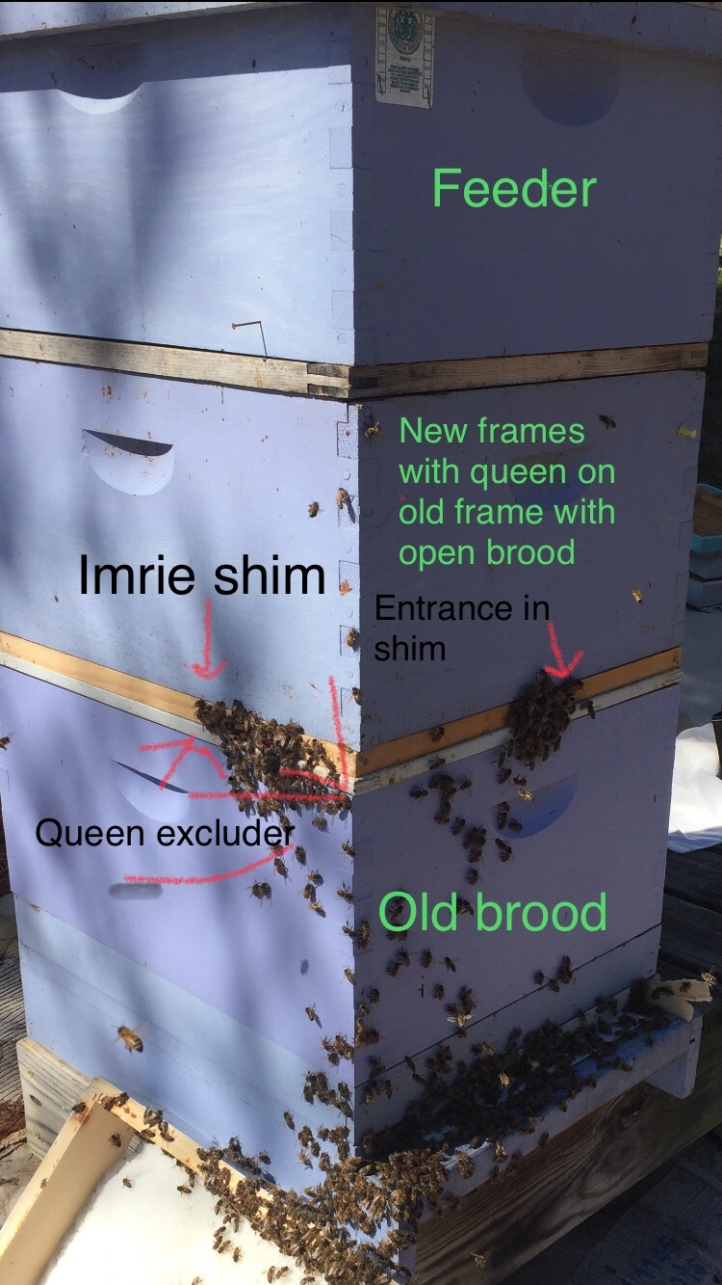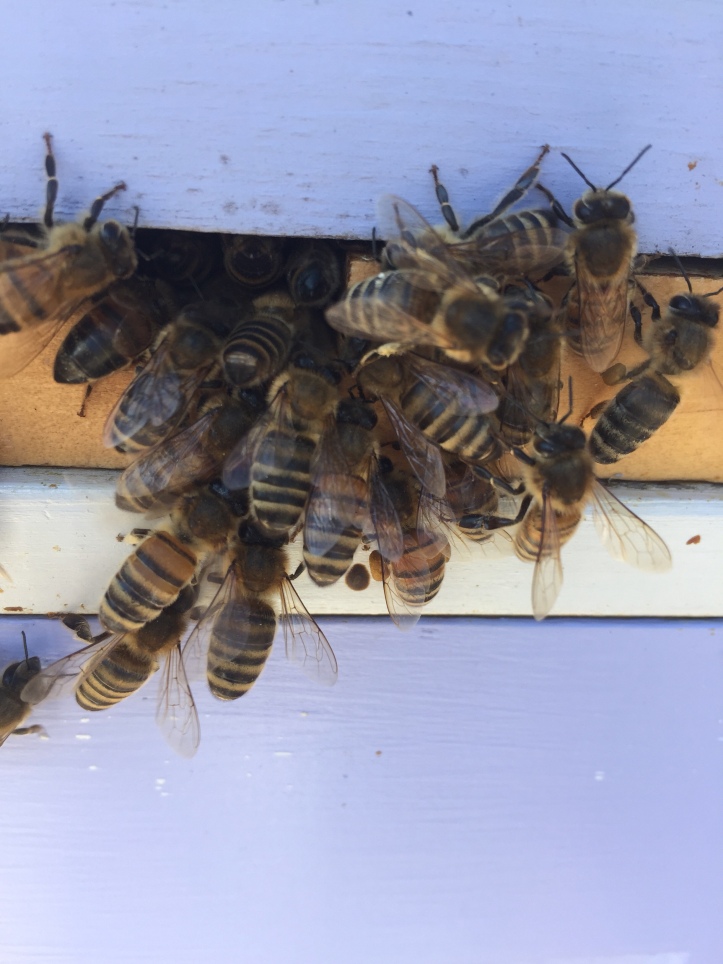So I had checked the bees a few times over the past few weeks and though the overall numbers were encouraging, I felt like they weren’t expanding as much as they should. I tried checking my notes from previous years but I don’t have anything for March that’s useful to me here.
What concerned me with the purple hive was the presence of eggs but little capped brood. I had watched a video from a University and they mentioned that their bees seemed to struggle to bring the brood past egg/young larvae stage. They decided to do a comb exchange with the understanding that disease pressure in the old comb was the issue. I wondered if the purple hive had a similar issue? The other two seemed fine.
Last weekend, I rechecked the three colonies with a closer, more critical eye. Though the activity is impressive, I wish I was seeing more capped brood. It was quite scattered and not as robust as I would like. So I took a hard look at the comb in the hives and realized that quite a lot of it was VERY dark. I have always been very good about exchanging the comb whenever I decided it was too dark for my taste (even it had only been used for a few months, out it came) so I was very disappointed to see how much needed to be exchanged.
I spent many hours thinking about what happened and researching approaches. I think the issue was all those swarms last year–I ended up using so much of my foundation/drawn comb that I think a significant number of frames were accelerated in their “degradation.” Now all the hives need FRESH comb. Thankfully, I have enough frames and foundation to do this. But the issue is T-I-M-I-N-G. When can I do this? The weather has SUCKED–we’ll get a spell of several days of warmth and then a sharp cold spell, especially night temperatures. Not exactly conducive to wax drawing.
What approach will I be using? How do I plan to give all the colonies new foundation while minimizing disruption and loss of brood/pollen? A Bailey Comb Change. Essentially, adding a new box with new foundation over the old box/comb. A queen excluder is placed between the two boxes and a new entrance is provided, the old entrance is CLOSED. Closing the old entrance keeps the foragers from packing the old frames with pollen. Then feed them and wait until they have started to draw some of the foundation before moving the queen up into the new box. OR you can move an old frame up into the new box (with the queen) and then remove this old comb once the foundation is being worked (this is what I plan do). The key is to feed them to encourage drawing of the foundation. In three weeks you come back and all the brood down below should have emerged and the bottom box is removed. There are also references to switching to all new equipment, which I will not do.
I rechecked the colonies 3/31 and was much more heartened and satisfied with what I saw. All had at least 3 or more frames of capped/mixed brood. I decided to check the mite counts because I had bought Formic Pro with the intention of treating the colonies in early spring if needed.
I used a powdered sugar roll for all three (I’ll use alcohol wash later in the season when there are more bees in the colonies). All three had zero mites. I don’t think I’ve ever tested my apiary and found zero mites.
After doing that I proceeded to find the queen and move her up to the new hive body with fresh comb. I added a jar of food at the top to encourage them to draw out the frames. I closed the bottom entrance, added a queen excluder over the hive body with old comb and an imrie shim on top of the excluder as the new entrance.

A couple of extra red marks made their way into the editing phase!

Bees at the imrie shim entrance fanning and exposing their Nasonov glands to help their hivemates find the new entrance.
Plan: keep feeders filled and on April 22nd I will remove the bottom hive bodies with the old comb once all the brood has hatched out.
Spring mite count: 3/31, sugar roll, zero mites all 3 colonies